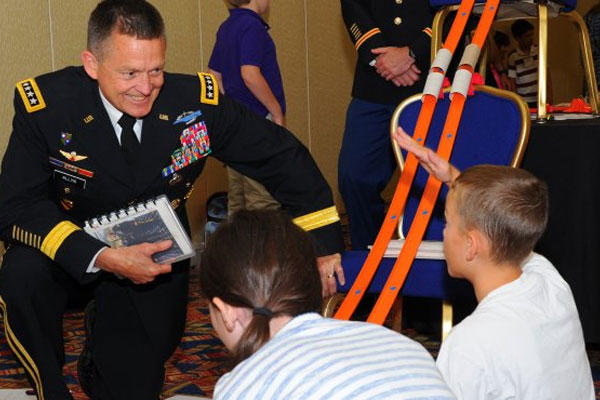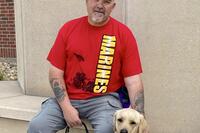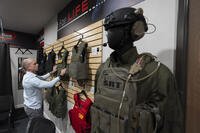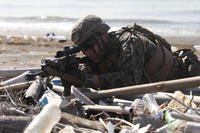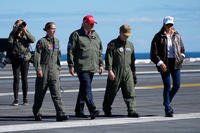WASHINGTON -- Military kids got some face time with the Army's vice chief of staff last week during a science experiment using toy cars that was meant to broaden their understanding of collisions, speed, angles, slopes, kinetic energy and potential energy.
Gen. Daniel B. Allyn and a group of grade school students from military Families were all attending the July 30 National Training Seminar, put on by the Military Child Education Coalition in Washington, D.C. At the event, students and the vice chief used "Hot Wheels" toy cars and associated gear to enrich their understanding of science, technology, engineering and mathematics education, also called STEM.
Speaking during a panel discussion afterward, Allyn said he thought what he had witnessed while working with the students was "awesome ... and there were some budding scientists in the group."
The general said both the science knowledge and the teamwork needed to effectively complete the experiments are attributes the Army will need in the future if it is to be successful.
"I thought I learned more from what they were doing than they may think they taught us," he said. "I think what we saw was the ability of our youth to innovate to discover solutions to seemingly insurmountable problems. In the Army, we're all about leaders who can innovate and solve problems, so I'd say we have some future Soldiers right here in front us."
Also part of the panel was Vice Adm. Sandra L. Stosz, who serves as the Coast Guard deputy commandant for mission support. After having watched the youth discuss the experiments they were involved in and innovate solutions on how to make the cars whip through high-speed curves without flying off the track and through the room, she said she too was impressed with their teamwork and problem-solving skills.
"I saw some young kids having a lot of fun, learning how to work together as a team, learning how to share, and learning how to fail -- because you know you have to fail first, before you can succeed," she said.
Fred Freking, an associate professor of clinical education at the University of Southern California, said that in addition to teaching STEM education, the experiment was also meant to encourage thinking, collaboration skills and scientific practices through play -- something he said is important for the development of social-emotional learning in young children.
"This curriculum is aligned for the next generation science standards, so it's the wave of the future, and the way all kids should learn science," Freking said.
Freking said play helps kids develop language skills. At the same time, it helps them learn to control impulses and develop creative problem-solving skills.
During the follow-up panel discussion, several of the students were invited to comment about their successes and failures they experienced during the experiments.
One youth, called Christin, said he and his group had tried multiple experiments.
"One thing about science is that you have to try and try over again to make sure you get it right," Christin said. "That means being willing to fail to succeed."
"We had to keep modifying the track until it would finally work ... later on, we built a few more ... it was a great way to learn about how aerodynamics work with speed, weight and mass," he said, before adding a touch of pragmatism. "Well, if we don't learn much, we had fun anyway."
At the end of the panel discussion, Allyn shook hands with each of the kids, slipping each his personal coin.
